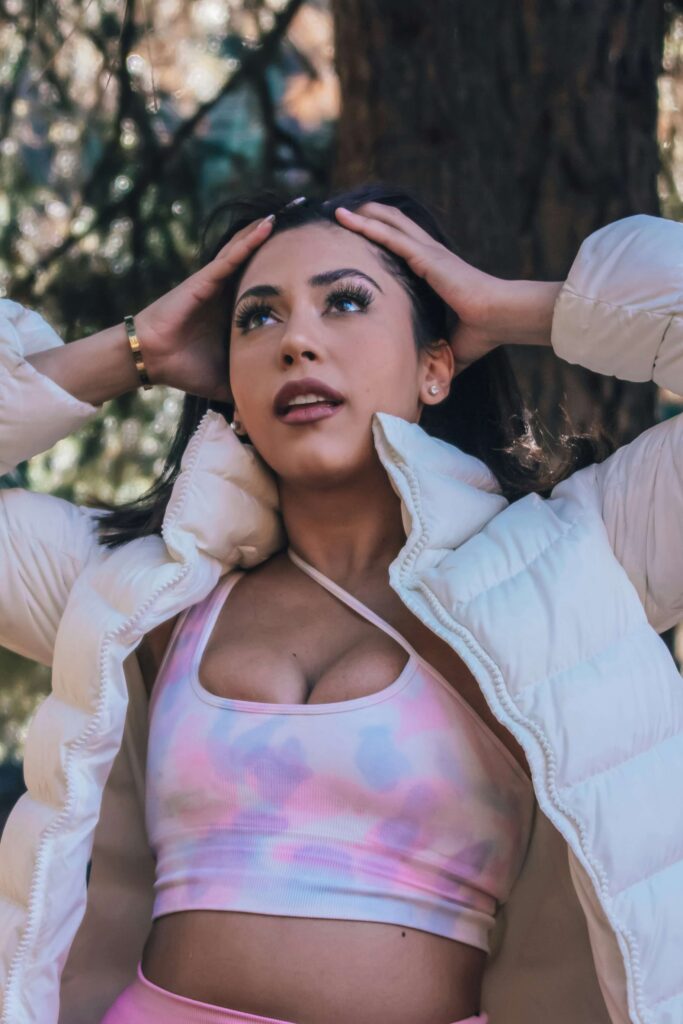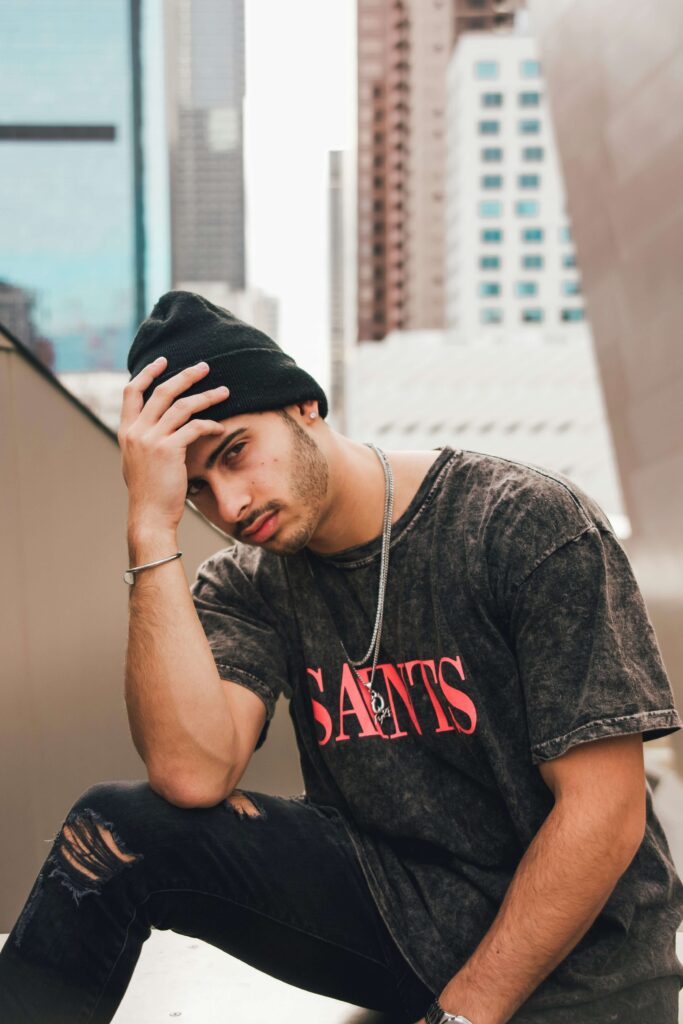Leveraging Macro-Influencers For Success: How To Do It Properly (Plus Examples!)
After bouncing around tech start-ups and university literature programs, Joe has finally settled down as Billo’s Head of Content. Joe now spends his days writing ads about ads, teaching clients how to craft killer content, and combing through our web copy with a bold red Sharpie.

The role of macro-influencers in marketing campaigns can be significant. These personalities often have immense gravitas and expertise, adding a layer of credibility to outreach efforts.
But, at the same time, they can be hard to find. According to research, only 0.87% of influencers fall into the “macro” category, and only a tiny fraction are “celebrities.”
Fortunately, you can still work with these influencers but it requires adopting the right strategy. And that’s where this article can help. It looks at when to leverage these high-ticket influencers, case studies of brands doing it successfully, and how you can choose the right people to work with.

What is a macro influencer?
Macro-influencers are social media personalities with audiences of 100,000 or more. These mega-stars usually have vast sway over their audiences, making them a veritable goldmine for brands.
Influencers By The Numbers: Macro vs. Mega vs. Micro
The days of influencer marketing being a one-size-fits-all affair are long gone. Now brands must be far more careful when choosing who they partner with.
To help them, the industry breaks down influencers into three groups: “macro,” “micro,” and “mega.” Micro-influencers have less than 100,000 followers and are often just regular people who’ve set up a blog or interesting social media account for their community.
How many followers does a macro influencer have:? These personalities have middling follower counts (usually between 100,000 and 500,000). These represent a sweet spot for many brands, combining accessibility with reach.
Lastly, mega influencers sit at the top of the pile. These individuals often have millions of followers and tremendous reach.
Naive brands often assume they should partner with the largest influencers they can find. However, that’s not always wise. That’s because as follower count increases, engagement tends to drop. Often, the macro influencers – those with a few hundred thousand followers – have audiences that hang on their every word.
Furthermore, macro-influencers usually have room to grow. A celebrity with 50 million people following them is probably already talking to everyone who will ever engage with them online. But someone with just over 100,000 could triple their followers in a year and still have plenty of headroom – good news for brands wanting to reach new people.
How Macro-Influencers Differ From Micro-Influencers
Besides sheer size and engagement, how else do macro-influencers differ from micro-influencers?
Higher Reach
The most obvious difference is the macro-influencer’s higher reach. While their engagement rates might be slightly lower, they have far broader audiences. This fact means that your brand doesn’t need to craft as many relationships. Just a handful of macro-influencers will suffice for most companies.
Fake Followers
On the flip side, there’s the issue of fake followers. Macro-influencers are more likely to have them than micro-influencers, meaning there’s a risk of paying a macro-influencer to get your content in front of fake audiences.
More Time Investment
Working with macro-influencers also requires more time than micro-influencers. You can’t just pay for a quick post. These creators will often insist on minimum quality standards, perhaps, a contract.
Content Style
Lastly, there’s the difference in content style. Macro-influencers have to adopt a certain tone to communicate with their audiences effectively. Meanwhile, micro-influencers often have a tight-knit group of people following them who know where they are coming from.
Who Has Successfully Collaborated With Macro-Influencers? Some Case Studies

Most businesses understand the value of working with macro-influencers intuitively. Executives and managers know it’s a potent way of getting their brand in front of users.
But does it work in practice?
The answer is a resounding “yes.” Numerous brands have already used it to achieve remarkable success. Here are some macro influencer examples:
Sun Peaks Resort And Callum Snape
Take Sun Peaks Resort, a skiing destination in British Columbia. It wanted to ramp up awareness of its winter attractions (including seasonal festivals) but wasn’t having much luck through conventional channels.
However, when the brand hired Callum Snape, an Instagram influencer and photographer with 735,000 followers (at the time of writing) its fortunes turned around. The company generated more than 200,000 article views and opened up a new target market for individuals looking for ski resort vacations.
Moxy Hotels And Taryn Southern
Moxy Hotels’ collaboration with YouTube star Taryn Southern is another example of a timely macro-influencer collaboration effort. The company got her to interview other influencers inside a shipping container made to look like one of its hotel rooms.
The collaboration worked because of Taryn’s appeal to Moxy Hotels’ user demographic (mostly millennials). The series proved so popular that users would often sit through minute-long adverts if it meant seeing the culmination of Taryn’s hilarious antics.
To emphasize the campaign’s success, Moxy Hotels maintained its relationship with Taryn for a long time. The experience taught them that audiences don’t mind long-form, series-based ad content as long as the quality is high.
Häagen-Dazs and Leslie Grace
Häagen-Dazs’s work with singer-songwriter Leslie Grace is yet another example of the value of using macro-influencers. The talented star with over 233,000 TikTok followers collaborated with the ice cream brand to highlight its fun and family-friendly vibe. Ultimately, the pairing (along with other stars) generated some 20 million TikTok impressions, helping to change perceptions of the label.
Big Fig Mattresses With Stefani Nicole
Mattress company Big Fig has also been getting in on the macro-influencer action. The company that makes mattresses for plus-sized people needed someone to help them get their body positivity message out to a wider audience.
When searching for help, they came across Stafani Nicole, a plus-sized fashion influencer from Utah. She focuses on stylish and fun inspirational posts for larger people wanting to wear garments from the top labels.
At the time of the collaboration, Stefani had 77,500 Instagram followers, generating Big Fig more than 7,000 views and 700 likes for her posts in partnership with the company, a massive increase in the numbers it was doing before.
Getaway House And Gia Gunn
Travel company Getaway House helps people living in cramped cities escape to nature. It prides itself on providing log cabin accommodation with basic amenities and a comfy bed for a hybrid camping experience.
Unfortunately, the brand wasn’t having much luck reaching its audience and communicating with people who love to travel. Its concept was industry-leading, but it couldn’t get the message out.
To remedy this, it reached out to drag performer and YouTube influencer Gia Gunn who has over 670,000 followers on Instagram. The brand used the transgender woman to highlight its inclusivity and ability to make everyone feel welcome at its destinations.
Finding Your Match: How To Pick The Right Macro Influencers
Leveraging macro influencers can be a highly successful strategy (and one many brands use). But how can you discover someone right for you?
Check They Align With Your Industry
Start by checking if the macro-influencer aligns with your industry. You want someone who talks to an audience similar to yours.
You can assess their alignment by:
- Looking at their hashtags
- Seeing who is commenting on their posts
- Going over their top topics or subjects
Ideally, you want evidence that your audiences overlap. Some of the people the influencer speaks to should be people who want to buy from you.
Ideally, you want at least a 50% overlap. If you can get higher than that, then great.
Check The Tone Aligns With Your Brand
You also want to see whether the influencer’s tone aligns with your priorities. If there’s a clash, it’ll feel awkward for your audience.
For example, suppose you sell health supplements for longevity. Working with a macro-influencer who is scientific and rigorous makes more sense than one who is just interested in complaining about aging.
Write down a list of words describing your brand if you aren’t sure about your tone. Then, see if they match how other people would describe the influencer. Example words could include:
- Luxurious
- Detail-oriented
- Precise
- Efficient
- Formal
- Fun
- Comedic
- Original
- New
- Educational
If there’s a correlation, then the partnership should go ahead. If there isn’t, it might create an awkward clash. For example, casting George Clooney for a Nespresso advert makes sense because he’s suave and sophisticated, just like the coffee he’s trying to sell. An unkempt person wouldn’t work.
Evaluate Their Engagement Rate
When assessing macro-influencers’ performance, always go beyond follower count and evaluate their engagement rate. Some personalities can have enormous headline numbers but only attract a fraction of that figure monthly.
You can do this by hand by counting likes and shares (and comparing these to influencers of similar size). Or you can use various tools that do it instantly for you.
Check Their Content Quality
At the same time, do some probing and check the quality of their content. Does it meet your standards and guidelines? Some early influencers (those who got ahead of the game) can have vast follower numbers on the back of less-than-ideal content.
Specifically, look for:
- Positive feedback from followers
- Evidence of creativity and originality (are they just copying what other influencers are doing, or bringing something new to the table?)
- Quality visuals or a theme they use for their posts and outreach
Mark influencers out of ten on these dimensions and tally the score. This approach should give you a more robust way to compare before making the final decision.
Look For Evidence Of Advocacy History
You can also look for evidence the influencer partnered with brands before. Checking whether they have a history of successful collaborations can indicate whether your partnership might also be productive.
Negotiate Your Partnership
Finally, always negotiate the partnership with your macro-influencer. Look for solutions that work best for both of you. Some personalities try to charge more than they’re worth.
Pay attention to the influencer’s performance metrics to see if they justify the price. Look at website traffic, conversion rates, and more. If you notice anything negative, use it to lower the bill.
At the same time, build a compensation structure. Tell the influencer how and when you intend to pay them. If you prefer to pay a percentage or flat fee, inform them and see what they say. Focus on the exchange of value. Tell them what they will get in return for working with you.
Always write down a contract with the influencer before signing any agreement. Spell out who gets what and when. Include things like:
- When you intend to pay them
- What you expect them to deliver (such as the amount of content per month)
- How much of the product they can access
- Who they can work with (or if you plan on adding an exclusivity clause)
Being specific will reduce confusion and prevent conflict later.
Lastly, show appreciation. Tell the macro-influencer that working with them is something your brand values. Make them feel good about the collaboration and excited about your upcoming partnership.
Future Trends in Macro-Influencer Marketing

Time never stands still in the macro-influencer world. Things are always changing, and will continue to do so long into the future. But what’s coming down the pike?
The Rise Of Niche Macro-Influencers
For one, the trend toward niche macro-influencers is likely to deepen further. Already there are numerous influencers in the 100,000 to 1 million range who only speak to their specific group. But that demographic looks set to grow substantially.
That’s because it is the natural outgrowth of the recent explosion in niche micro-influencers – individuals who inspire 60% more engagement than their larger counterparts. These personalities will come of age in 2025 and beyond, bringing their niche appeal to expanding audiences.
The Growth Of Short-Form Content
We will also see the continued growth of macro-influencers using short-form content to reach their audience on TikTok, YouTube Shorts, and Instagram Reels. These snappy pieces of content are exploding in popularity because of their snackable nature, only taking seconds to watch.
The most sophisticated macro-influencers are using these formats as gateways into the rest of their long-form content. Shorts build familiarity while longer videos and blogs generate value.
Livestream Shopping
Lastly, macro-influencer marketing will blur the lines between shopping and the social media experience. Personalities may use Instagram Shopping and YouTube Live to demonstrate products, perform unboxings, and answer questions.
Continue learning:
Head of Content
After bouncing around tech start-ups and university literature programs, Joe has finally settled down as Billo’s Head of Content. Joe now spends his days writing ads about ads, teaching clients how to craft killer content, and combing through our web copy with a bold red Sharpie.

Authentic creator videos, powered by real performance data
22,000+ brands use Billo to turn UGC into high-ROAS video ads.
How to Find Micro Influencers for Your Brand’s...
Looking for micro influencers for your brand’s next campaign? You’re [...]...
Read full articleBeyond the Ad: Influencer Marketing Services for...
Sponsored posts alone won’t cut it in 2025. Global influencer-marketing [...]...
Read full articleTop 20 TikTok Influencers for 2025
Having rapidly evolved from a short-form video app predominantly used [...]...
Read full article



